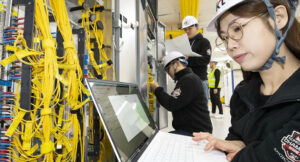Perplexity AI is in early talks to raise between $500 million and $1 billion in funding at an $18 billion post-money valuation.
The new funding would double the artificial intelligence startup’s most recent valuation. Perplexity has just under $100 million in annual recurring revenue, or ARR, according to the source, who asked to remain anonymous due to the confidential nature of the talks.
The AI search engine company competes against the likes of Google and Microsoft-backed OpenAI. Its valuation in December was $9 billion, triple its $3 billion valuation in June 2024.
Perplexity has been in the middle of the generative AI boom that began in late 2022 with the launch of OpenAI’s ChatGPT, but it faces increasing competition in the AI search market.
Earlier on Thursday, Anthropic launched its web search product, allowing its chatbot Claude to display real-time search results to a subset of users. Last fall, OpenAI launched a search feature within ChatGPT, its viral chatbot, that positioned it to better compete with Perplexity, as well as leading search engines such as Google and Microsoft’s Bing. Google has released AI Overviews within its search product as well, though it sparked controversy over high-profile errors soon after its release.
Bloomberg was first to report on Perplexity’s funding talks.
CNBC reported last month that Perplexity was close to raising a $50 million venture fund focused on early-stage AI startups. The company will be an anchor investor in the fund, but most of the capital is coming from outside limited partners, according to a person familiar with the matter who spoke with CNBC at the time.
Perplexity sees a potential investing advantage when it comes to startups because roughly 80,000 developers are plugged into its network, the person told CNBC at the time. That gives the startup visibility into who is using its application programming interface, or API, and who is most active in their consumption. Perplexity’s founders and investors are putting money into the fund, and some of the company’s commitment is in the form of stock, the source said.
The startup also made a bid in January to merge with TikTok as the social media platform’s future in the U.S. remains in limbo.
Despite the AI boom, Perplexity has been embroiled in controversy due to accusations of plagiarizing content from media outlets. Perplexity debuted a revenue-sharing model for publishers in July. Any time a user asks a question and Perplexity generates ad revenue from citing an article in its answer, Perplexity will share a percentage of that revenue with the publisher, the company said at the time. CNBC









